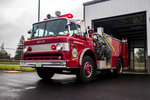
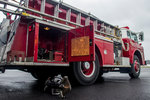
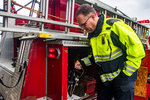
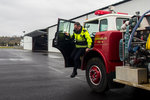
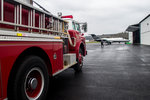
Chehalis firefighters have a new weapon to fight fires involving combustible liquids — from the airport to Interstate 5 to the railway.
Chief Ken Cardinale said the oldest rig in the department’s fleet has been outfitted with Class B foam, which puts a sealant over fuel to prevent it from releasing its vapors. It’s far more effective on such fires than water, which can actually spread the flames.
“We had a need for much larger capability,” Cardinale said.
Instead of scrapping its 1970s-era Pierce rig, Chehalis outfitted the truck with a 300-gallon foam tank; the foam is mixed with water to bring total capacity to 1,000 gallons. The cost for the foam apparatus was $8,000, allotted from the city’s budget.
“By repurposing an old engine, we saved thousands and thousands of dollars,” Cardinale said.
The engine will provide the largest Class B foam response capacity in Lewis County, and it will be available to respond to incidents like vehicle fires on I-5 or oil spills on the rail line. While the rig doesn’t have the capability to put out a large oil fire on the railway, it could keep one in check long enough to disconnect nearby cars and keep it from spreading.
It will be housed at the Chehalis-Centralia Airport, where foam response is particularly important. Cardinale noted that aviation fuel is particularly flammable, and the airport is one of the few between Portland and Seattle that can land large commercial aircraft.
“It's a great danger out there,” Cardinale said, noting that his time working in Palo Alto, California, and the airport there made him aware of the need for foam response in Chehalis.
He’s been working to add foam capability for three years, he said. Cardinale pointed to a February wreck on I-5 in which an off-duty Seattle firefighter pulled an injured man out of a flaming wreck in Chehalis — a close call that could have easily ended differently. He’s hoping area responders won’t have to rely on the luck of heroic Good Samaritans in the future.
“That easily could have been a different circumstance where (Foam) could have been utilized out there,” he said.
The truck is ready to go, he said, and will be available to respond to calls once the department’s firefighters finish training on it this month.